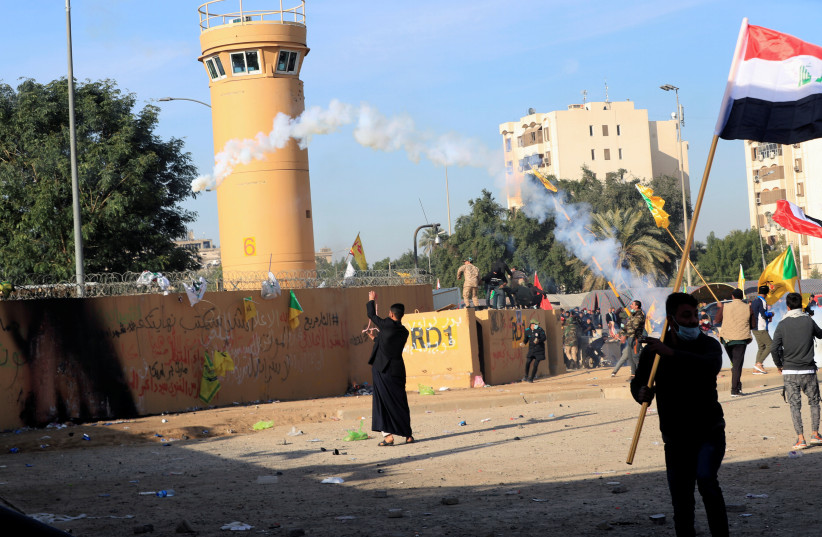Iraqi militias launched a drone attack on Eilat, but the drone never made it and was intercepted by Jordan in its airspace.
An X (formerly Twitter) account associated with the Islamic Resistance in Iraq, an umbrella term for multiple pro-iran militias, announced that they had launched a drone attack on Eilat in Israel.
The Jordanian Defence Ministry announced that it had shot down the drone after it had crossed into Jordanian airspace, according to Maariv.
The document, signed by the Islamic Resistance in Iraq (IRI), says that this attack is a continuation of their resistance to the occupation as well as to support the people of Gaza in response to "the massacres committed by the usurping entity against Palestinian civilians".
The IRI is not a fixed group according to the Washington Institute for Near East Policy, "but rather a generic name used to denote unity among Iran-backed armed groups and deemphasize their individual identities during attacks spurred by the Gaza crisis."

The Institute recorded a series of attacks against American bases in Iraq launched by the IRI since October 17, with all of them being attributed to this "generic, no-logo brand" militia, this is part of Iran's "facade strategy" to avoid accountability for attacks on Americans.
IRGC likely behind attacks from Iraq
They suggest this hints that Iran's Revolutionary Guard Corps (IRGC) is likely coordinating the attacks and "corralling" Iran's proxies which would normally argue over public leadership.
The Institute highlights three main militias likely operating under the IRI umbrella, Kataib Hezbollah (who kidnapped Israeli Elizabeth Tsurkov earlier this year), Asaib Ahl al-Haq, and Kataib Sayyid al-Shuhada. Indeed the original account that tweeted about the drone attack is affiliated with Asaib Ahl al-Haq.
This escalation is likely part of Iran's attempts to use proxy groups around the Middle East to put pressure on the US and Israel, as has been the case with increased Houthi attacks in the Red Sea.
Further complicating the situation groups such as Asaib Ahl al-Haq also hold 17 seats in the Iraqi parliament as part of the Fatah Alliance (unrelated to the Palestinian party of the same name).
